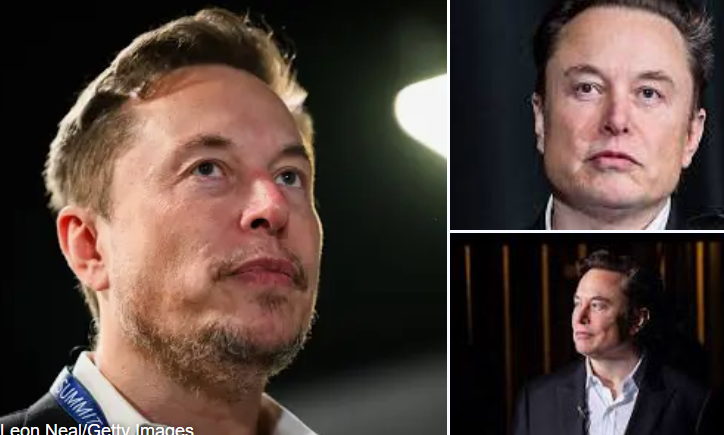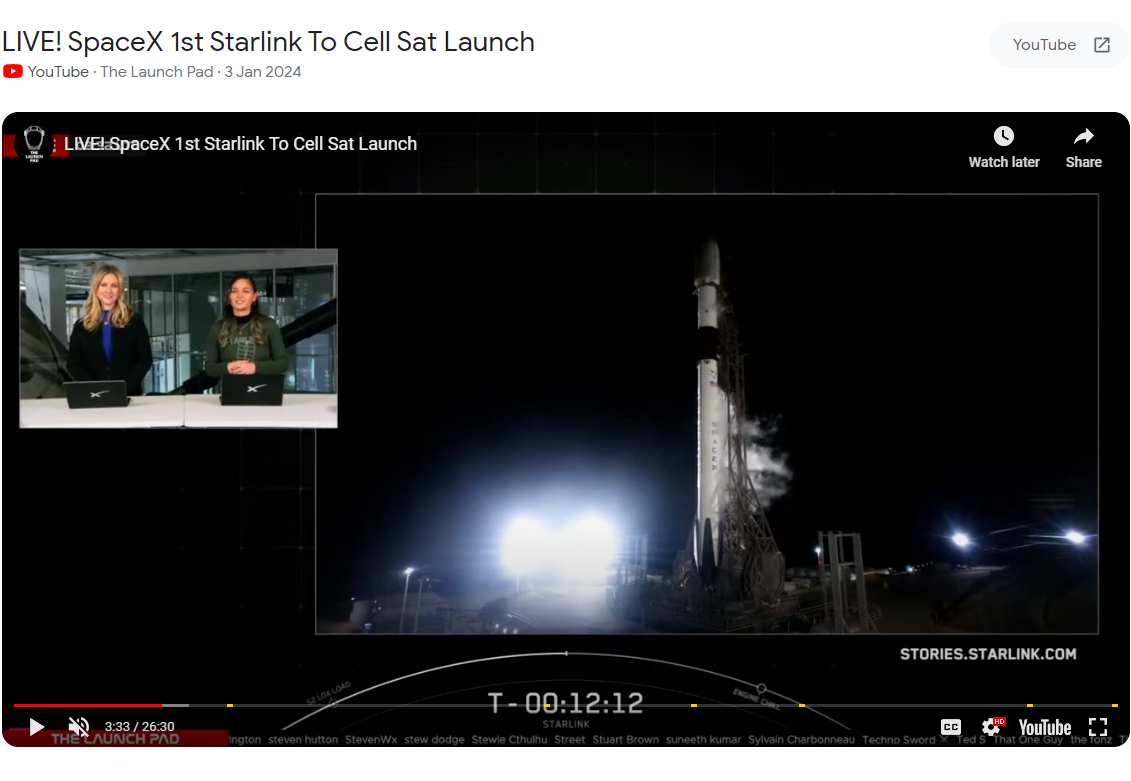
Elon Musk Launches Game-Changing Direct-To-Cell Satellite Innovation;Starlink’s Triumph
Table of Contents
ToggleElon Musk SpaceX Triumph: Launching Starlink’s Game-Changing Direct-To-Cell Satellite for Seamless Connectivity
Billionaire entrepreneur Elon Musk proudly declared the success of SpaceX’s Starlink mission on Wednesday, celebrating the triumphant launch of the Direct-To-Cell satellite. This groundbreaking venture is poised to revolutionize internet connectivity for users across the globe.

In a remarkable achievement, SpaceX, under the leadership of Elon Musk, successfully deployed 21 new Starlink satellites, including six cutting-edge Direct-To-Cell satellites. All 21 satellites were confirmed to be operational and in position by 10:20 am on the same day, marking a historic milestone for the aerospace company.
Starlink’s Direct-To-Cell satellite introduces a new era of connectivity, offering coverage for text, internet, and mobile networks wherever the sky is visible. Its all-encompassing reach ensures connectivity across diverse terrains and locations, promising a seamless experience for users. Here’s everything you need to know about Elon Musk’s Starlink’s Direct-To-Cell service:
What is Starlink’s Direct-To-Cell service?
The inaugural Starlink Internet Direct-To-Cell satellite, launched on January 3, is set to commence operations in the coming days. The text function is expected to go live in 2024, followed by the activation of voice, data, and IoT services in 2025.
Direct-To-Cell technology functions as a spaceborne cell phone tower, compatible with LTE phones. This means that users will enjoy service availability across all locations with an active signal from the satellite, eliminating the need for external connections or additional hardware.
As outlined on Elon Musk’s Starlink’s official website, satellites equipped with Direct-To-Cell capability feature an advanced eNodeB modem onboard, emulating a cellphone tower in space. This technology enables seamless network integration, akin to a standard roaming partner.
Connectivity is not limited to urban areas, as Starlink’s Direct-To-Cell service extends to remote regions where Starlink has been deployed. Users in partner countries such as the United States, Australia, Canada, New Zealand, Japan, Switzerland, and Chile will experience global cell phone service without the constraints of traditional networks.
The primary objective of Direct-To-Cell is to deliver high-speed connectivity in remote and rural areas, addressing the challenges faced by conventional networks. Starlink’s Direct-To-Cell promises faster and more reliable internet connections and cell services, ensuring a transformative experience for users worldwide.
In a monumental achievement, Elon Musk’s aerospace powerhouse, SpaceX, has announced the successful deployment of Starlink’s Direct-To-Cell satellite, marking a historic leap forward in global connectivity. This innovative satellite, part of a constellation of 21 Starlink satellites, is poised to reshape the landscape of internet access, particularly in remote and rural areas.
The Direct-To-Cell satellite, carried aboard Elon Musk SpaceX’s Falcon 9 spacecraft, represents a pioneering step in space technology. Following a flawless launch, all 21 satellites, including six Direct-To-Cell units, were confirmed operational and in their designated positions by 10:20 am. The event underscores SpaceX’s commitment to advancing space exploration and expanding internet accessibility for users worldwide.
Elon Musk Starlink’s Direct-To-Cell service is designed to offer comprehensive coverage for text, internet, and mobile networks wherever the sky is visible. This universal accessibility makes it a game-changer, providing connectivity in terrains and locations previously challenging for traditional networks.
Understanding Starlink’s Direct-To-Cell Service:
1. Launch and Activation Timeline:
- The inaugural Direct-To-Cell satellite was launched on January 3, 2024.
- Initial operations are expected to commence in the coming days, with text functionality set to go live in 2024.
- Voice, data, and IoT services are anticipated to be activated by 2025.
2. Revolutionary Technology:
- Direct-To-Cell acts as a spaceborne cell phone tower, compatible with LTE phones.
- Users will enjoy seamless service across all locations with an active signal from the satellite, eliminating the need for external connections or additional hardware.
3. Global Connectivity:
- Satellites equipped with Direct-To-Cell capability feature an advanced eNodeB modem onboard, emulating a cellphone tower in space.
- Connectivity extends beyond urban areas, reaching remote regions where Starlink has been deployed.
- Partner countries, including the United States, Australia, Canada, New Zealand, Japan, Switzerland, and Chile, will experience global cell phone service without traditional network constraints.
4. Transformative Impact:
- Direct-To-Cell aims to address the connectivity challenges faced in remote and rural areas.
- Faster and more reliable internet connections and cell services are expected, promising an enhanced user experience.
Elon Musk’s SpaceX and Starlink have once again demonstrated their commitment to pushing the boundaries of technology, with the Direct-To-Cell satellite poised to create a more connected and accessible world. As the service becomes operational, it holds the potential to bridge digital divides, offering a lifeline of connectivity to regions where it was once deemed impractical. The future of global internet access has taken a significant step forward with this groundbreaking achievement.
For the latest updates-click here.


